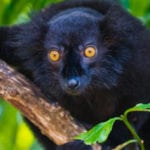 Mysteries
Mysteries  Mysteries
Mysteries  History
History 10 Surprising Stories About the Texas Rangers
 Humans
Humans 10 Philosophers Who Were Driven Mad by Their Own Theories
 Miscellaneous
Miscellaneous 10 Video-Game-Worthy Weapons and Armors from History
 Weird Stuff
Weird Stuff 10 Psychics Who Accurately Predicted Wartime Events
 The Arts
The Arts 10 Pieces of Art Inspired by a Broken Heart
 Health
Health 10 Science Fiction-Sounding New Medical Treatments
 History
History 10 Surprising Facts About the Father of Submarine Warfare
 Space
Space Ten Astonishing New Insights into Alien Worlds
 Weird Stuff
Weird Stuff 10 Bizarre Summer Solstice Rituals Still Practiced Today
 Mysteries
Mysteries Top 10 Haunting Facts About the Ghost Ship MV Alta
 History
History 10 Surprising Stories About the Texas Rangers
 Humans
Humans 10 Philosophers Who Were Driven Mad by Their Own Theories
Who's Behind Listverse?

Jamie Frater
Head Editor
Jamie founded Listverse due to an insatiable desire to share fascinating, obscure, and bizarre facts. He has been a guest speaker on numerous national radio and television stations and is a five time published author.
More About Us Miscellaneous
Miscellaneous 10 Video-Game-Worthy Weapons and Armors from History
 Weird Stuff
Weird Stuff 10 Psychics Who Accurately Predicted Wartime Events
 The Arts
The Arts 10 Pieces of Art Inspired by a Broken Heart
 Health
Health 10 Science Fiction-Sounding New Medical Treatments
 History
History 10 Surprising Facts About the Father of Submarine Warfare
 Space
Space Ten Astonishing New Insights into Alien Worlds
 Weird Stuff
Weird Stuff 10 Bizarre Summer Solstice Rituals Still Practiced Today
10 Impressive Examples Of Animal Self-medication
Human beings have been using natural methods of disease control like medicinal plants for centuries, but so have animals. It is such a common phenomenon that it has its own name, zoopharmacognosy. Whether it involves utilizing the healing properties of other animals, plants, or even trash, animals will do whatever they can to keep themselves healthy. Numerous species exhibit this behavior, from tiny insects to large apes. Here are a few of the most intriguing examples.
10 Times Scientists Got Animals High To See What Would Happen
10 Elephants

Animals care about their young just as humans do, though some species are more attentive parents than others. They also work to have as healthy a pregnancy as possible. Pregnant animals use plants the same way an expectant human mother would take medication.
There are numerous reasons for speeding along gestation, from potential birth defects to a pregnancy that takes a large physical toll on the mother. African elephants are known to eat labor-inducing plants that local humans use for the same purpose. The elephant gestation period is long, and even when there is no medical necessity to accelerate the pregnancy, the poor creatures may simply be tired of being pregnant.
9 “Geophagy”

The entire process of animal self-medication has a name, as previously mentioned. However, there are more specific processes numerous species of animals use to ease their pain. Due to the frequency of their observation, they are also given a name. Some may seem odd, but they have justifiable benefits.
Most animals self-medicate by carefully choosing what they eat. Many species, such as apes and elephants, utilize geophagy, which involves eating dirt and rocks. The process has numerous benefits for the animals who practice it. It can maintain stomach health, make up for nutrients they may be lacking, and more. The next time a human observes an animal eating dirt, they should consider the potential medical benefits instead of writing it off as a weird quirk of the species.
8 House Sparrows and Finches
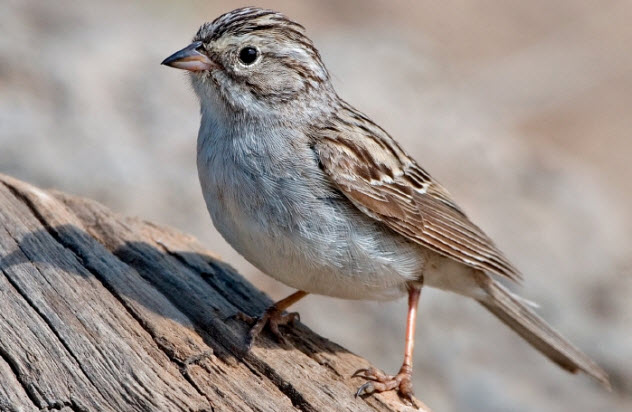
Most examples of animal self-medication involve natural elements like plants and other animals. However, animals are resourceful creatures that will use whatever they can find in their environment to improve their own health. Some species may even use human trash for medicinal purposes.
Birds now often live in environments that are full of humans and their garbage. Fortunately, this may occasionally be an asset to the animals. One study suggests house sparrows and finches place discarded cigarette butts in their nests because the nicotine deters mites. A bird that is not infected with mites will obviously be healthier. While it is still not advisable to callously throw cigarettes on the ground, it is impressive that an animal could find a way to use the things humans discard to improve their health.
7 Wood Storks and Starlings
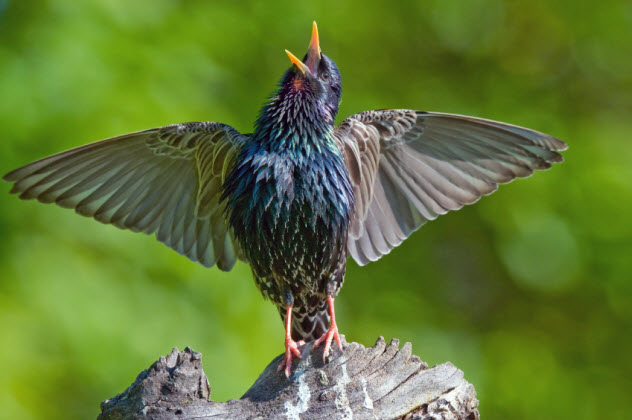
The same plant can be useful for easing numerous ailments and for many different species. The same medicines can treat many different diseases, and humans can feel the same positive effects by copying an animal’s self-medicating behavior. This is true of the almost identical behavior of two different species of birds.
The wood stork and the starling may look very different, but they share a desire to stay as healthy and infection-free as possible. Starlings use herbs to ease a host of skin problems like ulcers, sores, and eczema, and wood storks will reuse the starlings’ old nests, filling them with the same plants. The birds improve their own health and that of their offspring with this behavior. Humans have also picked up on the potential benefits. Pharmacists use herbs similar to the ones chosen by wood storks and starlings in their own skin medications. It is like a medicinal cycle, able to benefit three different species at the same time.
6 Orangutans
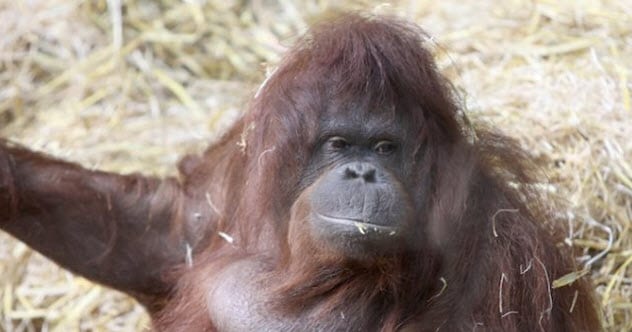
Animals end up with tired limbs just as humans do. This is especially true for those who have to carry a baby around constantly. Apes are smart creatures and have found ways to ease their own pain.
Orangutans have developed a method to ease the strain of carrying a baby through the jungle. The mothers (and occasionally males) chew the leaves of a medicinal plant into a paste, rubbing it onto their aching arms like a pain-easing balm. Any tired human mother would understand the motivation behind this behavior.
5 Wood Ants
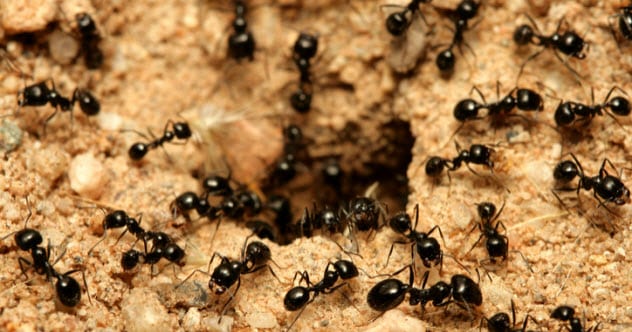
Numerous animals live in colonies or groups, working for the benefit of one another. This is often true in insects, a well-known example of which is the hive of the honeybee. Ants are known for building mounds and living together, and they also exhibit behaviors that provide medicinal benefits to the entire colony.
Living in close-knit communities can increase the spread of diseases. Because wood ants are prone to pathogens, they use conifer resin in their nests to fight off parasites and other harmful microorganisms. This increases the health of the entire colony, like a human town agreeing to vaccinate their children to prevent the spread of disease. All the ants who use the resin-coated nests are less prone to infection.
4 Woolly Bear Caterpillars

Some animals may seem to lack the brainpower required to engage in self-medicating behavior. However, even the smallest creatures can improve their own health, including insects. One example was observed in a study of woolly bear caterpillars.
Most animals seem to know exactly what is available in their environment to improve their health. The caterpillars in the study foraged for plants containing toxins that kill parasitic tachinid flies. These small insects serve as an example that almost any animal can self-medicate.
3 Monarch Butterflies
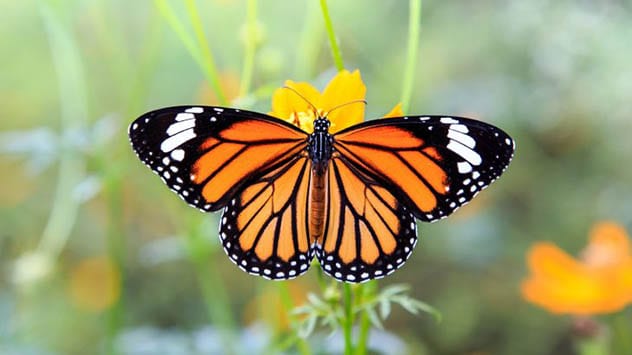
Woolly bear caterpillars are not the only insects that can improve their own health. With such short lifespans, these species need to increase their odds of survival in any way possible. Another example of a self-medicating insect is the beautiful monarch butterfly.
Parasites are a common problem for numerous species, even butterflies. They eat milkweed because it contains chemicals that combat the parasite Ophryocystis elektroscirrha. In doing so, they increase their own survival odds as well as that of their young.
2 Chimpanzees
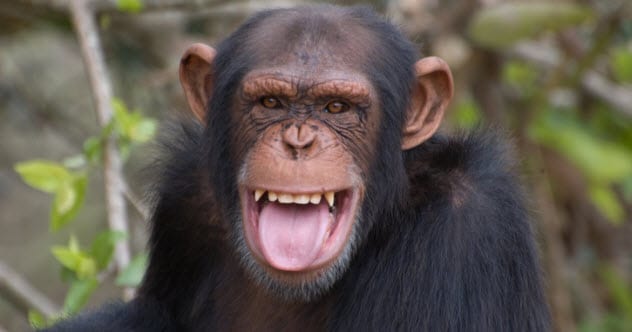
Apes are close genetic relatives to humans. This may be why most of the research on zoopharmacognosy has been focused on them, as it can then be more readily applied to humans. Orangutans are not the only apes that self-medicates, as chimpanzees are known to engage in similar practices.
Chimpanzees are smart creatures, so it may not come as a surprise that they are able to ease their own ailments. In Africa, they eat the same bitter pith that local residents use to control nematode infections. It is unknown which species used the plant first, but it is clear that they are both capable of medicating themselves.
1 Sheep
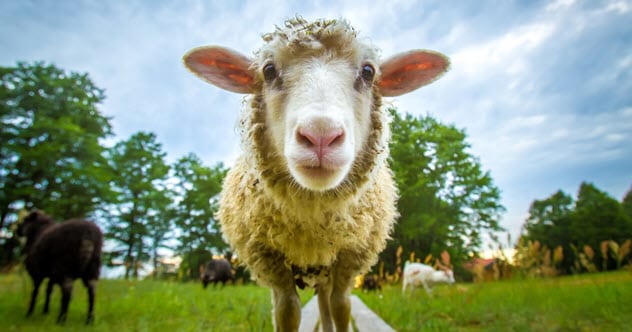
Parasite infections are a common influence behind animal self-medicating behavior. This is the case in sheep. When left to their own devices, they will choose foods that will keep them healthy and infection-free.
Sheep are usually guarded by a shepherd, but there are certain natural behaviors in the animals that should not be interfered with. When infected with parasites, they eat foods high in tannins to kill the invaders. There is even some evidence that this trait may be passed down to young. Lambs also ate tannin-rich foods, suggesting they instinctively knew it would prevent infection. They may not be known for their intelligence, but the sheep do show enough foresight to take care of their own health.
Top 10 Animals Given High Honors
About The Author: My name is Perrri Chastulik. I am a graduate of Messiah College with a digital media degree and a creative writing minor. I have loved to write since the day I got a writing crutch coming up with stories as a child. My areas of expertise are film, television, animals, video games, theater, and music. I love a good story, especially when it is told visually.








